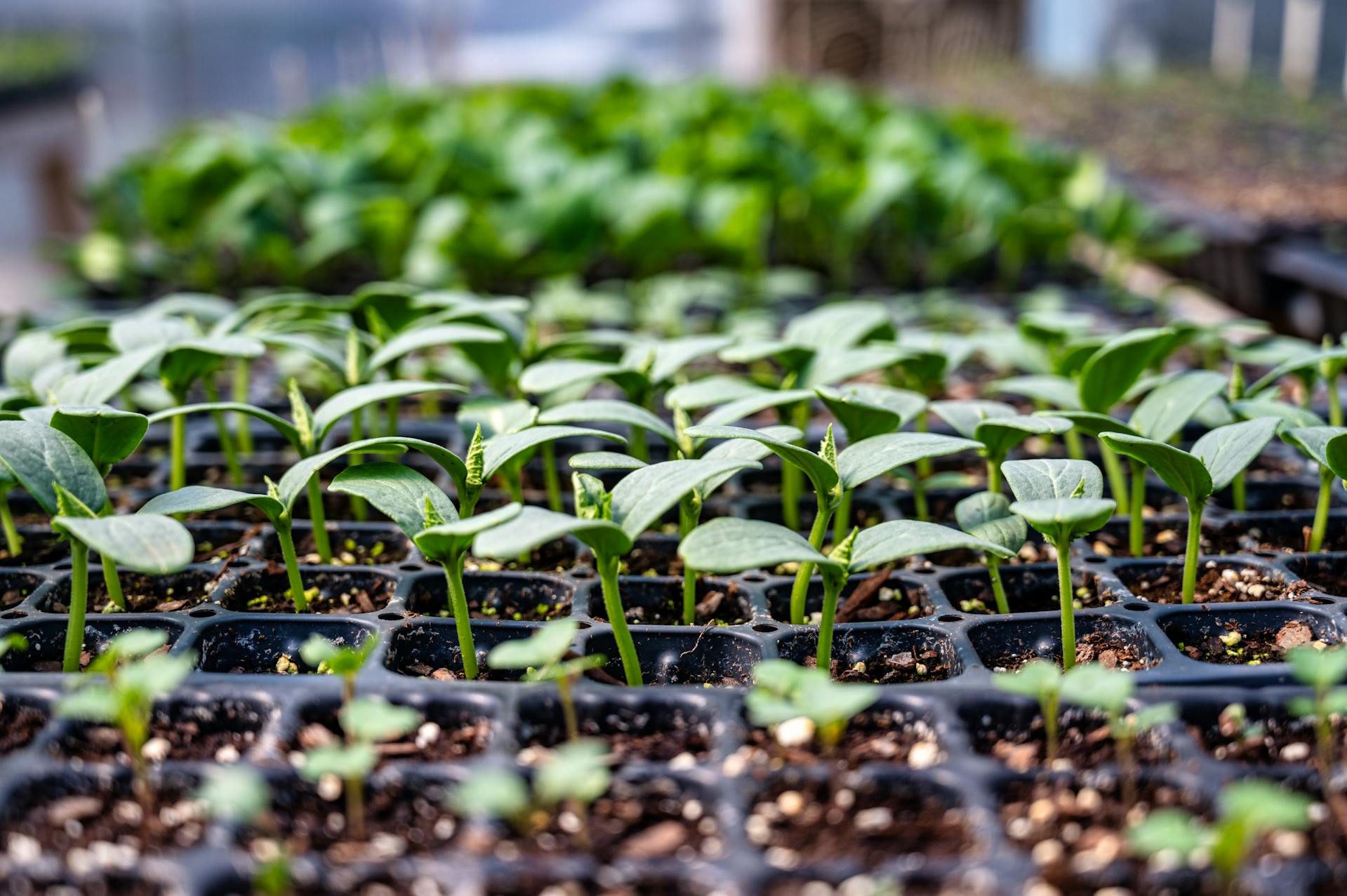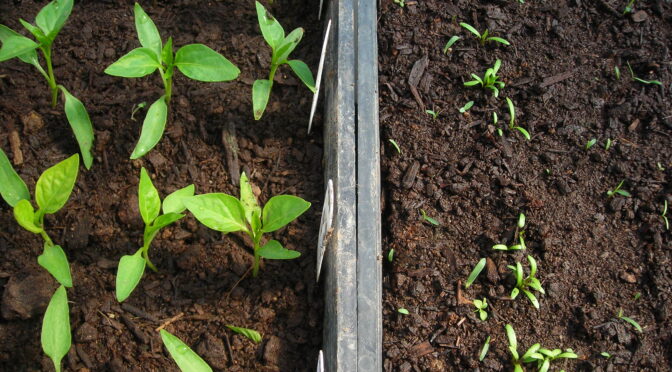We test all our seeds for germination rates before they’re scooped into packets and sent to fill spring gardens across the United States. Some native flowers and herbs can be finicky, but germination rates are higher than 80% or even better for most vegetable crops. However, there are many factors that can affect how well seeds germinate in potting trays or in the garden. Conditions like temperature, moisture, and light can all affect the speed or rate at which your seeds germinate.
Especially for new gardeners, these factors can be tricky to control. That’s why we’ve put together a few simple tips to improve and speed up your germination:
Pre-soak seeds for better germination.
Pre-soaking seeds can give seeds a head start by softening the seed coat and allowing the seed to absorb moisture.
This can be helpful for many large-seed crops, giving them a head start on germination. However, you can overdo it. Generally, we soak seeds from 2 to 12 hours. Smaller seeds like tomatoes and peppers are on the lower end with large, hard seeds like nasturtiums on the high end.
Crops that benefit from soaking:
- English Peas
- Snow/Snap Peas
- Sweet Peas
- Beets
- Tomatoes
- Winter Squash
- Morning Glories
- Beans
- Pumpkins
- Corn
- Swiss Chard
- Nasturtiums
Avoid soaking most of the small-seeded crops like lettuce, carrots, radishes, arugula, celery, cress, mustard, and spinach. If you’re in doubt, look into a specific crop’s requirements before soaking.
 Read all the specific crop instructions.
Read all the specific crop instructions.
Most vegetable crops are fairly straightforward to sow. Seeds like beans, sweet corn, and tomatoes can all be pushed into moist soil at a depth about twice the diameter of the seed. Kept moist and warm, they’ll germinate fairly quickly.
Unfortunately, not all seeds are so forgiving. In the growing instructions, you’ll notice that our Old Fashioned Vining and Balcony Petunias require light to germinate. Growers will need to press them into the surface of the soil and be vigilant about keeping them moist.
If you glance at any of the echinacea’s directions, you’ll find they require cold stratification. This period of cold, moist conditions coming and going signals to the seeds that winter has come and gone and it’s time to break germination.
A few plants even benefit from scarification or physical damage to the seed coat. Growers can nick the seed’s outer surface with a nail file, sharp knife, or sandpaper.
Carefully reading instructions for these finicky varieties can save you a whole lot of time and heartache.
Fun fact: some plant seeds even benefit from fire or smoke. These species, like the Ponderosa Pine, evolved in places where fire was a natural part of the ecosystem.
Ensure the seeds have good contact with the soil.
Seeds that don’t have good contact with the soil will often dry out or fail to root. When planting seeds indoors, firmly press seed mixing trays or containers. If your seeds need light, press them firmly into the soil.
When direct sowing, firmly press the soil over your seeds. Rake in broadcasted seeds to help ensure they get good contact.
Keep the soil at the right temperature.
Soil temperature is critical in seed starting, that’s why you’ll find temperature requirements right under the variety description here on the website or in our growing guides.
Some seeds like tomatoes, peppers, sweet corn, eggplants, and summer squash all need warm soil temperature to germinate and thrive. Soil that’s too cool can slow germination. In outdoor plantings like with seed corn, the seed may even rot before it germinates if the soil is too cold.
When planting these warmth-loving seeds indoors, we recommend keeping them in a warm spot, like near a wood stove or heater, while they germinate. Heat mats are also incredibly helpful though they can be pricey.
Other seeds do well with relatively cool soil. These include cabbage, broccoli, snap peas, English peas, spinach, and lettuce. They often germinate well indoors and during the spring. Direct sowing them in the middle of summer for a fall crop can be problematic. While the temperatures are high, we use row cover to shade and cool the soil or move to indoor sowing. In hot weather, setting flats into the fridge for a couple days after sowing can jump-start germination.
Keep the soil consistently moist for good germination.
Moisture plays a key role in germination. While plants can handle drying out occasionally even as seedlings, germinating seeds cannot. Always keep the soil evenly moist but not soggy and avoid letting it dry out. Setting a timer can be a helpful reminder.
Containers with proper drainage holes are essential to about over watering. Some growers find that humidity domes over their seed trays helpful. These clear plastic domes hold in moisture and warm air.
Need more seed starting advice? Read our full guide to starting seeds indoors.

